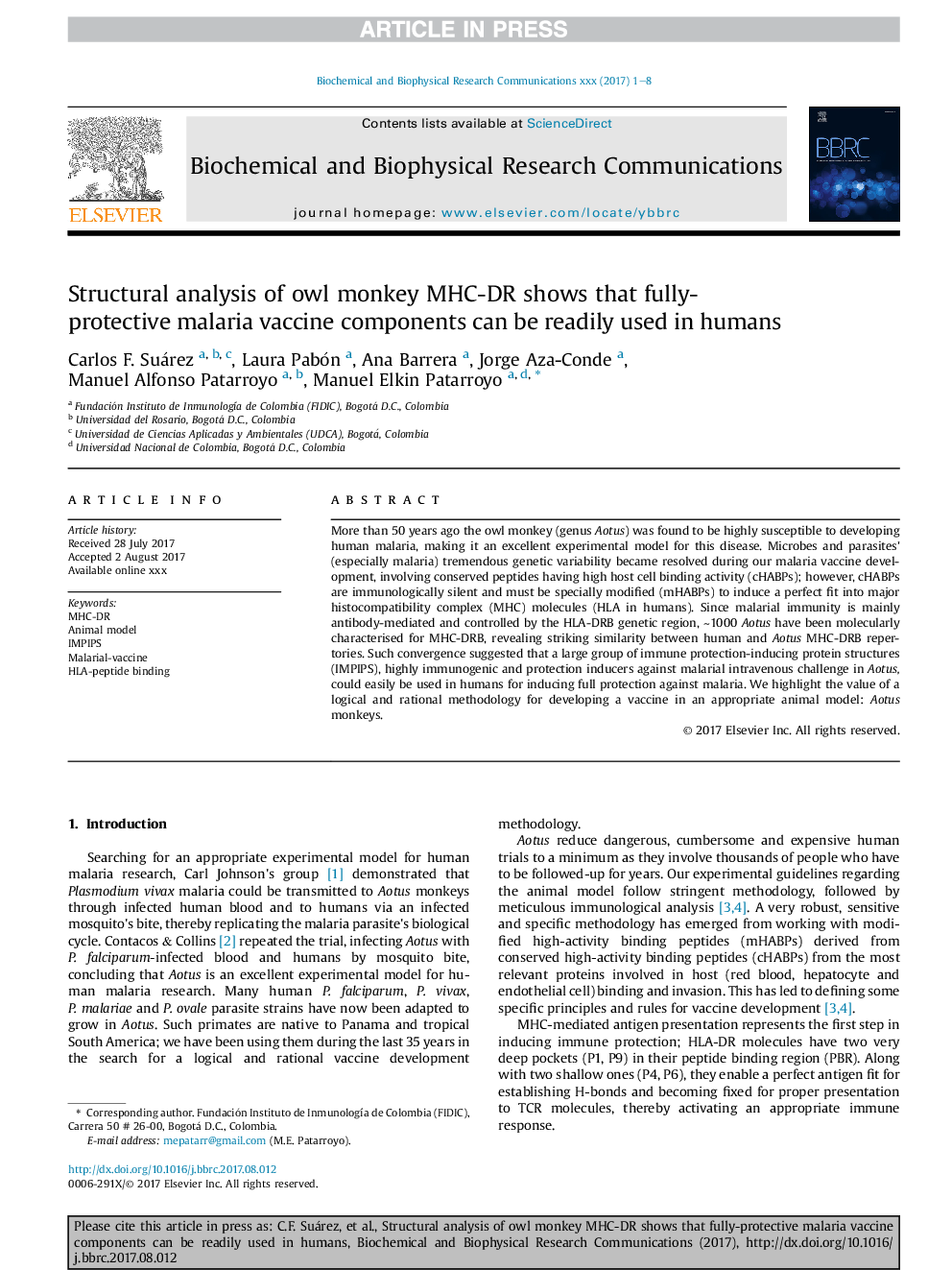| کد مقاله | کد نشریه | سال انتشار | مقاله انگلیسی | نسخه تمام متن |
|---|---|---|---|---|
| 5504774 | 1400253 | 2017 | 8 صفحه PDF | دانلود رایگان |
عنوان انگلیسی مقاله ISI
Structural analysis of owl monkey MHC-DR shows that fully-protective malaria vaccine components can be readily used in humans
دانلود مقاله + سفارش ترجمه
دانلود مقاله ISI انگلیسی
رایگان برای ایرانیان
کلمات کلیدی
موضوعات مرتبط
علوم زیستی و بیوفناوری
بیوشیمی، ژنتیک و زیست شناسی مولکولی
زیست شیمی
پیش نمایش صفحه اول مقاله

چکیده انگلیسی
More than 50 years ago the owl monkey (genus Aotus) was found to be highly susceptible to developing human malaria, making it an excellent experimental model for this disease. Microbes and parasites' (especially malaria) tremendous genetic variability became resolved during our malaria vaccine development, involving conserved peptides having high host cell binding activity (cHABPs); however, cHABPs are immunologically silent and must be specially modified (mHABPs) to induce a perfect fit into major histocompatibility complex (MHC) molecules (HLA in humans). Since malarial immunity is mainly antibody-mediated and controlled by the HLA-DRB genetic region, â¼1000 Aotus have been molecularly characterised for MHC-DRB, revealing striking similarity between human and Aotus MHC-DRB repertories. Such convergence suggested that a large group of immune protection-inducing protein structures (IMPIPS), highly immunogenic and protection inducers against malarial intravenous challenge in Aotus, could easily be used in humans for inducing full protection against malaria. We highlight the value of a logical and rational methodology for developing a vaccine in an appropriate animal model: Aotus monkeys.
ناشر
Database: Elsevier - ScienceDirect (ساینس دایرکت)
Journal: Biochemical and Biophysical Research Communications - Volume 491, Issue 4, 30 September 2017, Pages 1062-1069
Journal: Biochemical and Biophysical Research Communications - Volume 491, Issue 4, 30 September 2017, Pages 1062-1069
نویسندگان
Carlos F. Suárez, Laura Pabón, Ana Barrera, Jorge Aza-Conde, Manuel Alfonso Patarroyo, Manuel Elkin Patarroyo,